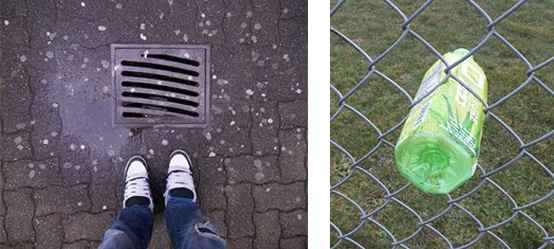Noticing things comes with being a designer. I certainly notice things – I see shapes in unexpected places, juxtapositions of random elements, order in a messy scatter of objects. I notice beauty, functionality and thoughtful design, just as much as badly executed, frustrating or downright ugly design.
Creativity needs constant nourishment; being alert to everything around us provides a never ending stream of inspiration. And for those who may lack a natural knack for noticing things, it is a skill that can certainly be learned, developed and exercised.
In the age of smartphones it is now easier than ever to task students with collecting observations, then sharing them on a digital platform such as Google Classrooms, Moodle, a wiki page, Pinterest or instagram, even a simple PowerPoint slideshow.
Here are three ideas for activities that can help students develop a critical eye.

TWENTY EXAMPLES OF… Ask students to document a minimum of 20 examples of a set theme. You can go in so many different directions, linking to other curriculum subjects, current projects and topics. It could be a COLOUR (like the example above which I compiled from photos taken on one July walk in our local marshes), a SHAPE, a LETTER or NUMBER, a MATERIAL, a PATTERN, a FACE…. The aim is to encourage students to look at their environment through different lenses; compelling them to notice what otherwise may have been overlooked.

HUMANS WERE HERE: Documenting the evidence of different human behaviours in the public realm. What can we learn from these?
In these three examples, desire paths (photo: flickr) are evidence of people’s endless quest for a shorter, better route. Discarded chewing gum (below, left) is likely to appear denser around gutters or on platforms near the train doors.

And we are all familiar with instances of ‘neat’ littering such as this one (above, right). What can these tell us about human behaviour? How can observation like these be used to inform design solutions, for example, around littering ?
PROBLEMS SOLVED: Documenting the different ways in which people improvise solutions to problems they encounter. Ask students to observe their surroundings as they go about their day, capturing examples of makeshift, temporary, bodged together and perhaps ingenious fixes that people have come up with to overcome a challenge. Creating a library of collected images can become a class ‘brief bank’, providing students with inspiration for identifying problems and creating more permanent, well thought out solutions to these.

